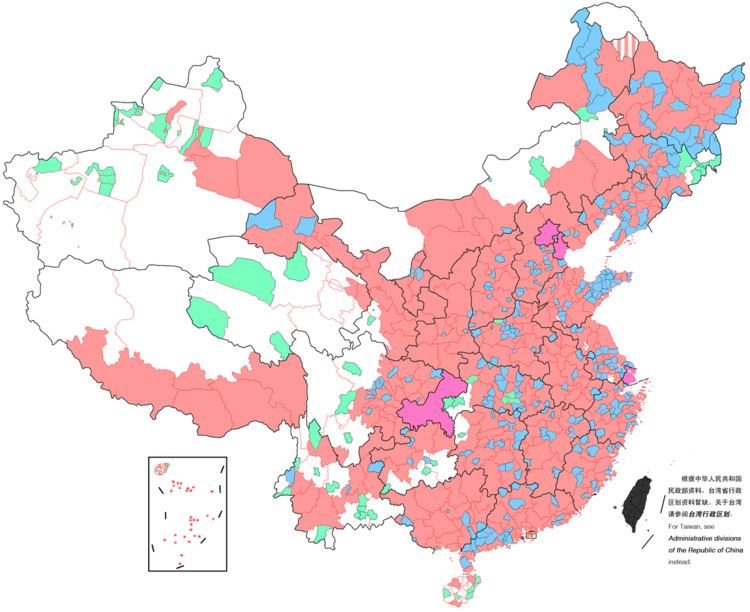 | ||
According to the administrative divisions of China including Hong Kong and Macau, there are three level of cities, namely provincial-level (consists of municipalities and SARs), prefectural-level cities, and county-level cities. As of June 2016 the PRC has a total of 662 cities: 4 municipalities, 2 SARs, 293 prefectural-level cities (including the 15 sub-provincial cities) and 363 county-level cities (including the 10 sub-prefectural cities and 9 XXPC cities) not including any cities in the claimed province of Taiwan.
Contents
- The tier system
- List of cities
- Republic of China 1911 1949
- Imperial China 618 1911
- Tang 618907
- Song 9601279
- Liao 9071125
- Jin 11151234
- Western Xia 10381227
- Yuan 12711368
- Ming 13681644
- Qing 16441912
- References
Based on 2010 census data, the largest cities are the four centrally administered municipalities, which include dense urban areas, suburbs, and large rural areas: Chongqing (28.84 million), Shanghai (23.01 million), Beijing (19.61 million), and Tianjin (12.93 million). There are 105 cities with over 1 million people in the metropolitan area as of 2015 and is the only country to have that many cities with over 1 million people in the metropolitan area as of 2015. [1]
The tier system
The Chinese central government introduced a ranking system in the 1980s to facilitate the staged rollout of infrastructure and urban development throughout the country. Cities were ranked by tier according to the government's development priorities. The tier system began as a bureaucratic classification, but has since the later 1990s acquired new salience from the perspectives of real estate development, commercial vitality and cosmopolitanness, besides the old notions of population, economic size, and political ranking. It has now become a proxy for demographic and social segmentation in China, especially relevant to those college-educated seeking non-governmental employment.
List of cities
Republic of China (1911-1949)
Note: all names are transliterated in pinyin.Imperial China (618-1911)
Note: all names are transliterated in pinyin.Before 1921 all cities in China are classified as Fǔ (Chinese: 府; urban prefecture) means an office or a command institution.
